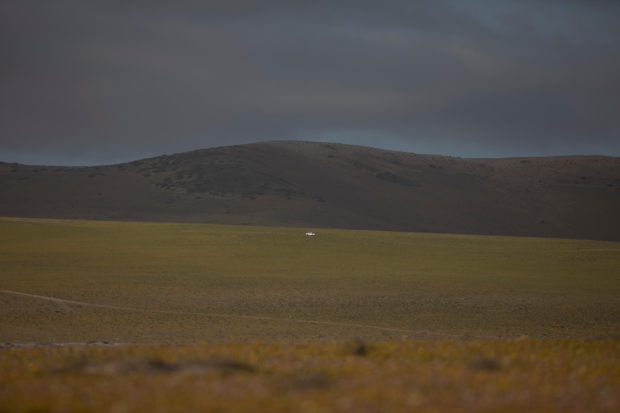Chile’s flowering desert may bloom again after heavy rains

A view of the Atacama desert partially covered with flowers during ‘Desierto Florido’ (Bloomed desert), a natural phenomenon that fill with flowers and plants the driest desert in the world and takes place during spring, near Copiapo, Chile, October 13, 2021. Picture taken October 13, 2021. REUTERS FILE PHOTO
SANTIAGO — The arid plains of northern Chile are likely to once again be painted a rainbow of colors with blooming flowers after this year’s winter rains set the stage for the so-called flowering desert in the Atacama Desert.
The Atacama bloom attracts large numbers of local and foreign tourists and happens after heavy rains in the southern hemisphere’s winter.
In June, some areas received more than 80 millimeters (3.15 inches) of water, a significant amount for the normally arid desert, said biologist Roberto Contreras.
“That tells us the (floral) phenomenon could be significant (this year),” he added.
Seeds and bulbs of endemic species like the “Ananuca” or “Pata de Guanaco” typically hide underground as the hot sun beats down from above, waiting for enough water to shoot out of the ground.
Article continues after this advertisementIn the Llanos de Challe National Park, the gateway to the driest desert in the world, the phenomenon is already seen with the sprouting of small carnations and other species.
Article continues after this advertisement“It is just beginning, we hope that by the second half of September we can have even more flowering,” said park ranger Jorge Godoy.
Due to the fragility of the ecosystem, the area is usually protected and driving through the grounds is forbidden, but it is still common to see vehicles passing through the flowery slopes.
The area also faces the persistent threat of traffickers of endemic species or visitors picking flowers, which are unlikely to survive outside their environment.
The regional head of the national tourism office, Alejandro Martin, said his office is already preparing for tourists who want to witness the bloom, adding visitors would be expected to protect the natural surroundings.
RELATED STORIES
Chile’s desert dumping ground for fast fashion leftovers
In Chile’s Atacama desert, stargazers search for alien life and ‘dark energy’